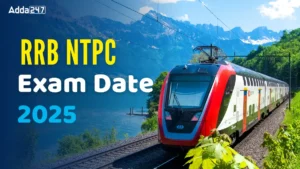Q1. पीतल के बर्तनों की टिनिंग करते समय, गर्म बर्तन को साफ करने के लिए इस्तेमाल किया जाने वाला अमोनियम क्लोराइड चूर्ण ____ का धुआं पैदा करता है।
(a) अमोनिया
(b) कार्बन मोनोऑक्साइड
(c) हाइड्रोक्लोरिक एसिड
(d) अमोनिया और हाइड्रोक्लोरिक एसिड
(e) उपरोक्त में से कोई नहीं
Q2. किसी बर्तन पर जस्ते की विद्युत परत चढ़ाने की प्रक्रिया में:
(a) बर्तन को कैथोड बनाया जाता है
(b) शुद्ध जिंक को ऐनोड बनाया जाता है
(c) बर्तन को कैथोड बनाया जाता है और शुद्ध जिंक को ऐनोड बनाया जाता है
(d) बर्तन को एनोड तथा शुद्ध जिंक को कैथोड बनाया जाता है
(e) उपरोक्त में से कोई नहीं
Q3. क्लोरोफिल में ___ होता है।
(a) लोहा
(b) ताँबा
(c) मैग्नीशियम
(d) मैंगनीज
(e) उपरोक्त में से कोई नहीं
Q4. सूर्य के प्रकाश के अदृश्य भाग का उपयोग करके प्रकाश संश्लेषण कुछ ____ द्वारा किया जाता है।
(a) वृक्षों
(b) शैवाल
(c) बैक्टीरिया
(d) कवकों
(e) उपरोक्त में से कोई नहीं
Q5. निम्नलिखित में से किसके कारण टमाटर का लाल रंग होता है?
(a) कैप्साइसिन
(b) कैरोटीन
(c) एंथोसायनिन
(d) लाइकोपीन
(e) उपरोक्त में से कोई नहीं
Q6. सामान्यतः बालू पर उगने वाले पौधे कहलाते हैं-
(a) लिथोफाइट्स
(b) जेरोफाइट्स
(c) कैस्मोफाइट्स
(d) सामोफाइट्स
(e) उपरोक्त में से कोई नहीं
Q7. कीटभक्षी पौधे केवल ऐसी मिट्टी पर उगते हैं जिनमें ____ की कमी होती है।
(a) कैल्शियम
(b) नाइट्रोजन
(c) मैग्नीशियम
(d) फास्फोरस
(e) उपरोक्त में से कोई नहीं
Q8. स्वपोषी पोषण के लिए आवश्यक पदार्थ हैं
(a) CO2 और H2O2
(b) क्लोरोफिल
(c) सूर्य का प्रकाश
(d) उपरोक्त सभी
(e) उपरोक्त में से कोई नहीं
Q9. तारों की ऊर्जा का अक्षय स्रोत किसके कारण होता है
(a) हाइड्रोजन का हीलियम में रूपांतरण।
(b) हीलियम का हाइड्रोजन में रूपांतरण।
(c) रेडियोधर्मी तत्वों का क्षय।
(d) ऑक्सीजन की अधिकता जो जलने और ऊर्जा को मुक्त करने में मदद करती है।
(e) उपरोक्त में से कोई नहीं
Q10. निम्नलिखित में से कौन सा कथन सही नहीं है?
(a) जब जल का वाष्प दाब वायुमंडलीय दाब के बराबर हो जाता है तो जल उबलने लगता है।
(b) जल को सार्वत्रिक विलायक के रूप में जाना जाता है।
(c) जल की स्थायी कठोरता MgCl2, CaCl2, MgSO4 तथा CaSO4 की उपस्थिति के कारण होती है।
(d) बर्फ का घनत्व जल के घनत्व से अधिक होता है।
(e) उपरोक्त में से कोई नहीं
S1.Ans. (d)
Sol. Ammonium chloride decomposes into ammonia and hydrogen chloride gas. NH4Cl → NH3 + HCl It produces fumes of ammonia and hydrochloric acid.
S2.Ans. (c)
Sol. The zinc serves as a sacrificial anode, so that it cathodically protects exposed steel.
S3.Ans. (c)
Sol. Chlorophyll is a green photosynthetic pigment found in plants, algae, and cyanobacteria. It contains Mg2+ ion as an important constituent.
S4.Ans. (c)
Sol. Green plants and most autotrophs use Photosynthetically active region of sunlight in the visible range 400nm to 700nm. Some bacteria like purple bacteria, Heliobacteria and others can harvest solar light by absorbing its near-infrared component for photosynthesis.
S5.Ans. (d)
Sol. Tomato is red in colour due to the presence of lycopene pigment found in the chromoplasts.
S6.Ans. (d)
Sol. Psammophytes is a plant that grows in shifting sands, primarily in deserts. They are marked by a number of adaptations which enable them to exist on wind-blown sands for e.g. Haloxylon persicum, Calligonum, Ammondendron, Eremosparton, Smirnowi.
S7.Ans. (b)
Sol. Insectivorous plants are plants that derive some or most of their nutrients from trapping and consuming animals or protozoans, typically insects and other arthropods. They have adapted to grow in places where the soil is thin or poor in nutrients, especially nitrogen.
S8.Ans. (d)
Sol. CO2, H2O, chlorophyll and light are necessary for the process of photosynthesis which occurs in autotrophs.
S9.Ans. (a)
Sol. The inexhaustive source of energy of stars is the conversion of Hydrogen in Hellium. The major part of sun is made up of Hydrogen and Helium and it’s inner temperature is 107° K. In such a high temperature in the fusion of hydrogen Nucleas take place which results in the releases of huge energy.
S10.Ans. (d)
Sol. Ice is less dense in comparison to liquid water. Actually when water freezes, water (H2O) molecules form a crystalline structure by Hydrogen bonds. These bonds cause molecules to push apart lowering the density of water (H2O).



 12th July Daily Current Affairs 2025: सभ...
12th July Daily Current Affairs 2025: सभ...
 RRB NTPC Undergraduate Exam Date 2025 Ou...
RRB NTPC Undergraduate Exam Date 2025 Ou...
 IBPS Clerk 2025 Exam Date Revised, आईबीप...
IBPS Clerk 2025 Exam Date Revised, आईबीप...

